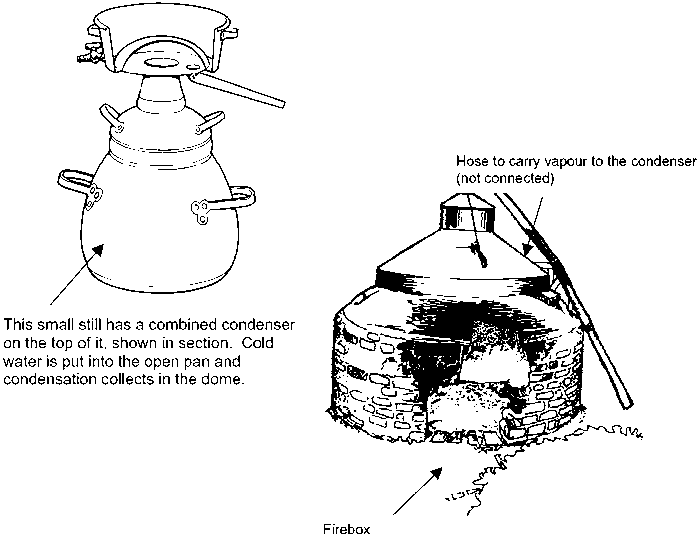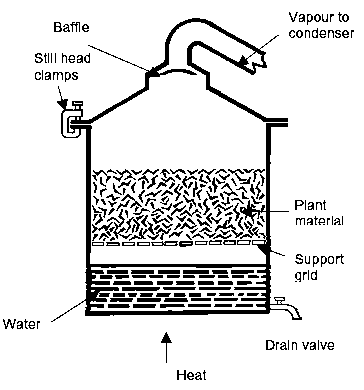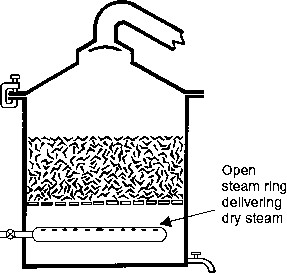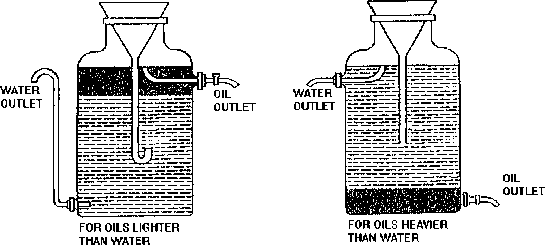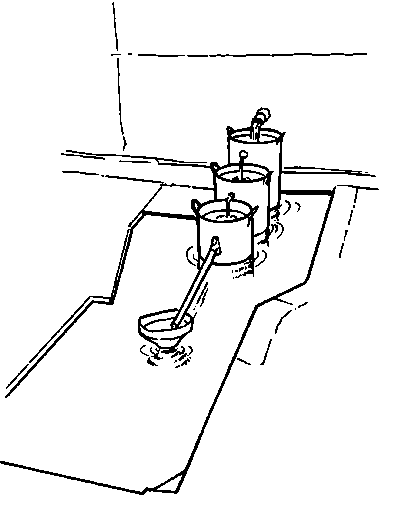What to Do with Hot Chillies
Contents
How to Use Chillies as a Natural Pesticide
Chillipepper, Capiscum Frutescens
After: "Natural Pesticides No. TNP1", Tropical Advisory Service, June 2000, HDRA - the organic organisation
Chillipepper, Capiscum frutescens
The chillipepper, or chilli, originated in South America and is now widespread throughout the tropics and subtropics. The insecticidal properties are highest in the ripe fruit especially in the skin and seed. Chillis act as a stomach poison, antifeedant and repellent to a number of pests.
Note: Care should be taken when handling chillis because they irritate eyes and skin.
Preparations
Chilli spray 1
Crush and grind 4 cups of ripe chilli pods or 5 cups of chilli seeds. Place in a pan with 3 litres of water and boil for 15 to 20 minutes. Take off the heat and add 3 more litres of water. Leave to cool. Then filter through a cloth and keep the liquid. Add soap so that the mixture sticks to the pests and the leaves. Use potash based soft soap that is used for washing dishes and not the modern washing powders that contain caustic soda which will harm plants.
How to use: Use as a spray or sprinkle using twigs or grass tied together to form a whisk, against most insects including caterpillars, aphids, flies, ants and mealy bugs. Apply once a week if there is no rain or two or three times a week if it rains. It is important to use this solution as a preventative measure.
If the concentration of the chilli solution is too strong, it can burn the leaves. So it is important that the right strength is found by testing.
Chilli spray 2
Slice 500 grams of ripe chilli pods and place in a bucket filled with water. Leave to decompose for 4 to 5 days. Sieve the mixture and keep the liquid. Dissolve 30g of soap into this liquid and use as a spray or sprinkle using twigs or grass tied together to form a whisk. Use potash based soft soap that is used for washing dishes and not the modern washing powders that contain caustic soda which will harm plants.
How to use: as for chilli spray 1.
Chillis and garlic spray
Grind 1 garlic bulb and 1 onion. Add 1 tablespoon of powdered chilli peppers. Stir into 2 litres of hot water. Leave the mixture to cool. Strain through a fine cloth and keep the liquid. Add 1 tablespoon of soft soap and stir well.
How to use: Use as a spray for caterpillars in fruit trees.
Chilli, Mexican marigold and onion spray
Chop 4 chilli pods, 4 onions and a handful of Mexican marigold leaves. Soak for 1 day in soapy water. Use potash based soft soap that is used for washing dishes and not the modern washing powders that contain caustic soda which will harm plants. Strain using a sieve and keep the liquid. Add 2 litres of water.
How to use: Spray onto red spider mite infestations.
Chilli dust
Grind as many dried ripe chilli pods as required.
How to use: Sprinkle the powder around the base of plants to repel ants, cutworms, slugs and snails as well as many soil pests.
Other uses of chilli
Interplanting
Chilli can be interplanted with crops to act as a repellent against many insects, fungi and viruses.
Against pests in the house
In Mexico, when a new house is constructed, the basement or the foundation of the house is "painted" with a fuild chilli paste made from the hotest chillies available, to stop pests from entering or nesting in the house.
Other names of Capiscum frutescens
Contacts, Links
HDRA - the organic organisation, Ryton Organic Gardens Coventry, CV8 3LG, UK Tel: +44 (0)24 7630 3517 Fax: +44 (0)24 7663 9229 Email: Website: http://www.hdra.org.uk
Link to Fourthway's poster "How to make a natural pesticide": http://www.fourthway.co.uk/posters/pages/pesticide.html
Related Articles
- How to Use Neem as a Natural Pesticide
- How to Control Termite without Chemicals
- How to Process Oilseed on a Small Scale
- How to Use Garlic as a Natural Pesticide
- How to Use Chillies as a Natural Pesticide
Two ways to support the work of howtopedia for more practical articles on simple technologies:
Support us financially or,
Testimonials on how you use howtopedia are just as precious: So write us !
<paypal />
Categories
How to Produce Essential Oils
Essential Oils
Short Description
- Problem: Extraction of oils from various plants, fruits for main uses of fragrance, paint etc.
- Information Type: Application
- Difficulty: Medium
- How Many people? Up to five people
Small-scale production
Essential oils are steam-volatile oils distilled from plant materials and represent the typical flavour and aroma of a particular plant. They are found in flowers, leaves, roots, seeds and barks and find use principally in perfumery and flavourings. The essential oil content of plant material is low, typically 1 to 3% of the plant weight. They are thus low-volume, very high value products. This makes them attractive crops for remote smallholders where high transport costs prevent the transport of lower value cash crops.
Essential oils contain a complex mix of components and it is this mix that gives the “note” that experts recognise. Table 1 shows the important constituents of some common essential oils.
Table 1 - Essential oils
|
Name |
Part of plant used |
Botanical Name |
Important Constituents |
Uses |
|
Lemongrass and |
Leaf |
Cymbopogon spp |
Citral |
Perfumery |
|
Eucalyptus |
Leaf |
Eucalyptus globulus |
Cineale |
. |
|
Cinnamon leaf |
Leaf |
Cinnamomum zeylanicum |
Eugenol |
Used to make artificial vanilla |
|
Clove |
Bud |
Eugenia caryophyllus |
Eugenol |
Dentistry |
|
Turpentine |
Pinus spp |
Terpenes |
Paints | |
|
Lavender |
Flower |
Lavendula intermedia |
Linalol |
Perfumery |
|
Sandalwood |
Wood |
Santalum album |
Sanatols |
Perfumery |
|
Nutmeg |
Nut |
Myristica fragrans |
Myristicin |
. |
|
Almond |
Nut |
Prunis communis |
Benzaldehyde |
. |
|
Coriander |
Seed |
Coriandrum sativum |
Linalol
|
. |
The quality of the oil obtained from a particular species will be influenced by where it is grown and how it has been processed. New producers are likely to meet with resistance from buyers as this is a very conservative market depending to a great extent on trust regarding supply and quality. Producers and buyers also closely guard information and “secrets”. Once established trading relationships are made, however, reliable markets can be gained.
Essential oils can be divided into two broad categories:
• Large volume oils which are usually distilled from leafy material such as lemon grass, citronella and cinnamon leaves. Lemon, lime and orange oils are also produced in very large amounts.
• Small volume oils which are usually distilled from fruits, seed, buds and, to a lesser extent, flowers, e.g. cloves, nutmeg ,coriander, vetiver and flower oils.
Harvesting
Correct harvesting is very important. The essential oil content varies considerably during the development of the plant and even the time of day. If the plant is harvested at the wrong time, the oil yield or its quality can be severely reduced.
Essential oils are usually contained in oil glands, or veins that are fragile. Poor handling will break these structures and release the oils resulting in losses. This is the reason a strong smell is given off when these plants are handled. Some examples of harvesting of common oils are:
• Citronella and lemongrass. The first harvest can take place 6-9 months after planting. Then the grass can then be harvested up to four times a year. If harvested too often, the productivity of the plant will be reduced and the plant may even die. If the plant is allowed to grow too large, the oil yield is reduced. For lemongrass it should be 1.2m high with 4-5 leaves. The grass should be harvested early in the morning as long as it is not raining. Harvesting can be done with machetes or simple knives.
• Cinnamon bark is harvested during the wet season since the rains facilitate the peeling of the bark. Harvesting involves the removal of bark from stems measuring 1.2-5 cm in diameter. This takes place early in the morning.
• Spices should be harvested correctly and at the correct stage of maturity. The main obstacle to correct harvesting is the crop being picked immature. This is usually due to fear of theft or the farmer requiring money urgently.
• Flowers such as ylang-ylang, should be picked very carefully and processed as soon as possible.
The preparation of the material for distillation varies. Some materials, and in particular flowers, should be distilled as quickly as possible. Many herbs are left to wilt, or are dried before distillation while barks, seeds and roots can be dried and stored for several months prior to distillation. Information on small scale drying systems can be found in the Practical Action Technical Briefs on drying.
As oil is lost during drying care needs to be taken and low temperatures used. Allowing leaves to dry in the shade or partial shade will result in less loss than direct sun drying. It is vital that the material is dried to a moisture content that is low enough to prevent the growth of moulds and typical moisture levels are shown in Table 2. The dried product should be stored in a cool place and protected from any pick-up of moisture.
Table 2: moisture contents for various spices
|
Spice |
Maximum final moisture |
|
Mace |
6.0 |
|
Nutmeg, cloves |
8.0 |
|
Turmeric, coriander |
9.0 |
|
Cinnamon |
11.0 |
|
Pepper, pimento, chillies, ginger |
12.0 |
|
Cardamom |
13.0 |
Distillation
This section examines the three common methods of distilling essential oils first examining the stills used and then condensers and oil separation methods.
• Water distillation is the simplest and cheapest distillation method. Two stills are shown in Figure 1 below.
The plant material is totally immersed in water and boiled. The steam and oil vapour is condensed and the oil is separated from the water using the system described below. The stills used are simple and find wide use amongst smallholder farmers, They are often heated over an open fire, which if not carefully controlled, may result in local overheating and burning of the charge. The quality of the oils produced in such traditional stills can be improved if they are heated by steam generated in a separate boiler. This, however, requires more expenditure in capital equipment. Water distillation remains the recommended method for barks, such as cinnamon and sandlewood, and certain flowers.
• Water-steam distillation is an improvement of simple water distillation. The charge of plant material is supported on a mesh or grill above boiling water as shown in Figure 2. The water is boiled, either over a fire or by steam from a boiler using a steam coil or jacket. This system greatly reduces local overheating and burning of the charge. It is important that the charge is packed evenly and not too tightly into the still. Over-packing will result in back-pressure and the steam finding channels through the charge leaving zones that have not been extracted.
• Steam distillation is the most advanced method and depends on live steam being supplied from an external boiler. The charge is again supported on a mesh above the base of the still and above a steam coil as shown in Figure 3.
The principle advantage of this method is that “dry steam” is used which results in reduced distillation times and hence greater outputs.
All still bodies should be insulated to reduce heat losses and fuel consumption. In some cases they are mounted on frames that allow them to be inverted in order to rapidly remove the hot charge after distillation. This reduces “turn round times” and increases daily outputs.
Modern still bodies are usually made from stainless steel while traditional systems use mild steel. For the reasons described below, in many cases, the use of expensive stainless steel is not necessary.
Condensers
Steam containing the essential oil vapour leaves the still via a head, known as a gooseneck, and passes to a condenser as shown in Figure 4. Simple condensers consist of a metal coil in a tank of flowing cold water. Ideally the coil of the condenser should be constructed from an inert material such as stainless steel in order to prevent the oil chemically reacting with mild steel. In many traditional stills the gooseneck and condenser coil were constructed from copper or brass that had been internally tinned to provide a reasonably inert surface. It is very important that the condensed steam (water) leaving the condenser is thoroughly cooled. If it is still warm there will be a loss of essential oil.
Oil separation
The final step in the distillation of essential oils is the separation from the water flowing from the condenser using a special flask called a Florentine. This is a very important stage as small quantities of oils of very high value are being handled and maximum efficiency is the key to profitability.
Most essential oils are lighter than water and float to the surface of the Florentine. Some oils, however, are denser than water and sink to the bottom. For this reason two types of Florentine are used as shown in Figure 5. It is common practice to link several Florentines together. Most of the oil will separate in the first flask but some will pass over with the water to the second, third etc. separates the oil from the water. This is usually done by letting the mixture settle in a large container made of glass. If the oil is heavier than water, the oil is collected from the bottom of the container, and if lighter from the top.
Using a sequence of oil separators will extract a greater amount of oil.
If the water is cloudy after separation, it should be returned to the distillation unit and redistilled. This is called 'cohabitation'.
At the end of the distillation the oil and water in the Florentines is placed in a large laboratory separating funnel (Figure 6) and allowed stand for several hours after which the water can be run off. At is stage a small plug of cotton wool is often placed in the outlet of the funnel. As the oil runs through the plug any final traces of water are removed.
The oil should be stored in brown glass bottles or drums, tightly closed and with the minimum possible headspace as oxygen in the air reacts with many oils.
References and further reading
Minor Oil Crops FAO Agricultural Services Bulletin 94, B. Axtell, FAO,1992
Essential oil distillation Food chain No 24, ITDG, 1999
Quality Control of Essential Oils: Series on Aromatic Plants of Sri Lanka Booklet No 4,
Ceylon Institute of Scientific & Industrial Research (CISIR), 1981
This Howtopedia entry was derived from the Practical Action Technical Brief Essential Oils.
To look at the original document follow this link:
http://www.practicalaction.org/?id=technical_briefs_misc
Useful addresses
CISIR is now called the Industrial Technology Institute (ITI)
ITI
363 Bauddhaloka Mawatha
Colombia 7
Tel: +94 (1)698 624 /697 994
Fax: +94 (1) 698 624/697
E-mail: info@iti.lk
Website: http://www.iti.il
Practical Action
The Schumacher Centre for Technology & Development, Bourton on Dunsmore, RUGBY, CV23 9QZ, United Kingdom.
Tel.: +44 (0) 1926 634400, Fax: +44 (0) 1926 634401
e-mail: practicalaction@practicalaction.org.uk
web: www.practicalaction.org

Equipment suppliers
Please note this is a selective list of suppliers and does not imply endorsement by Practical Action.
Macanuda, Divisão de Máquinase Equipamantos
Rua Araranguá, 41
Bairro América - Joinville - SC
Brazil
Tel/Fax: +47 422 6706
E-mail: macanuda@ig.com.br
Website: http://www.macanuda.hpg.ig.com.br
Manufacture distillation equipment with capacities from 30 litres to 900 litres.
Newhouse Manufacturing Co., Inc.
1048 North Sixth Street
Redmond, OR 97756
USA
Tel: +1 541 548 1055,
E-mail: info@newhouse.mfg.com
John Dore & Co. Ltd
282 Chessington Road, Ewell
Epsom, Surrey, KT19 9XG
United Kingdom
Tel: + 44 (0)20 83931629
Fax: + 44 (0)20 87867627
Website: http://www.johndore.co.uk
John Dore & Co. Ltd supplies copper and stainless steel fabrications comprising: distillation plant for potable alcohol, essential oil stills, water stills, caramel pans, tanks and heat exchangers.
Sté de Fabrication Alambics Armagnacais et Charentais (SOFAC)
Z.I. Route de Nérac
32100 Condom
France
Tel: + 33 5 62 28 00 13
Fax: + 33 5 62 28 36 51
Manufacture distillation still for essential oils and alcohol.
Chemac Equipments PVT Ltd.
M.J.D'Souza Compound, Saphed Pool, Saki Naka, Mumbai - 400 072
India
Tel: +91 (0)22 2851 0777 / 859 2352.
Fax: +91 (0)22 2851 6986
Website: http://www.chemacequipments.com/
As an agency concerned with support to people in the developing countries, we do not in fact manufacture or sell equipment. Steam Distillation Units with a throughput of 50 litres up to 200
Alvan Blanch
Chelworth
Malmesbury
Wiltshire
SN16 9SG
United Kingdom
Tel: +44 (0) 666 577333
Fax: +44 (0) 666 577339
E-mail: info@alvanblanch.co.uk
Website: http://www.alvanblanch.co.uk
Essential Oil Distillation Plant used to extract oil from a variety of crops, herbs and spices using the method of distillation. Capacity: 130-420 kg/hour.
Related Articles
- How to Produce Essential Oils
- How to Process Oilseed on a Small Scale
- How to Process Spice
- How to Process Turmeric
- How to Process Ginger
- How to Process Cumin
- How to Process Cinnamon
- How to Process Pepper
- How to Process Nutmeg and Mace
- What to Do with Vetiver
Two ways to support the work of howtopedia for more practical articles on simple technologies:
Support us financially or,
Testimonials on how you use howtopedia are just as precious: So write us !
<paypal />
Categories
- Pages with broken file links
- Agriculture
- Fruits
- Ideas
- Pest control
- Prevention
- Tree
- Easy
- Global Technology
- Arid Climate
- Forest Environment
- Global
- Mediterranean Climate
- Monsoon Climate
- Montaneous Environment
- Rural Environment
- Temperate Climate
- Tropical Climate
- Urban Environment
- Less than 10 US$
- Chillies
- Onions
- Garlic
- Oil
- Seedlings
- Termites
- One Person and more
- Household
- Village
- Neighbourhood
- Application
- Howtopedia requested drawings
- Howtopedia requested images
- Requested translation to Spanish
- Medium
- Less than 50 US$
- Small Industry
- Small Business
- Products
- Practical Action Update
- Requested translation to French
- Requested translation to Hindi
- Requested translation to Portuguese
